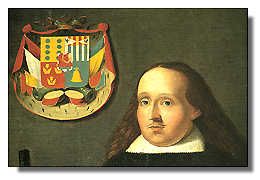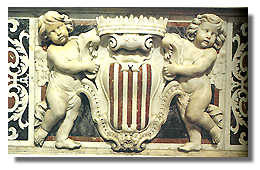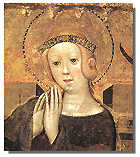
The new legislation privileged Catalans, Majorcans, and Aragonese, who were called
to fill all public positions.
Pietro IV of Aragon introduced a parliament modeled
after Barcelona's, uniting representatives of three classes, the Stamenti:
military (knights and nobles), ecclesiastic (bishops and high prelates), and royal
(city representatives). However, the Stamenti had no real governing power. At first,
the constitution of the Coeterum was not applied in a discriminatory fashion. However,
as conflict grew between Aragon and Arborea, restrictions became ever more severe,
banishing Sardinians from Castello. Nightly, beginning in 1328, a harsh trumpet blast
announced the hated order for all Sardinians to leave the walled city.
A noteworthy aspect of the Catalan-Aragon period in Cagliari was the formation of
trade guilds. Various neighborhoods flourished. The Jewish community built its synagogue.
The neighborhoods of Stampace and Villanova were guided by their own mayors and councilmen.

One of the darkest chapters in Sardinia's history began in 1479 when Ferdinand the
Catholic succeeded Giovanni of Aragon under united Castilian and Aragonese rule.
While Spanish domination lasted, the various social classes heretofore excluded from
participation in government continued their struggle against royal power to win appointments
to public office.
With the outbreak of the War of Spanish Succession in 1702, opposing factions in favor
of the two pretenders formed in Cagliari. The English navy threatened Cagliari by
sea, and, in August 1708, an English and Dutch unit bombarded the city. The English
regiment occupied the city and met with no resistance.
|







